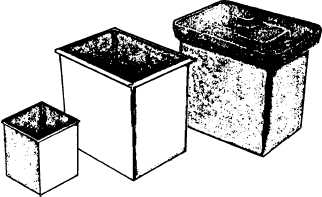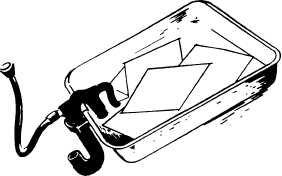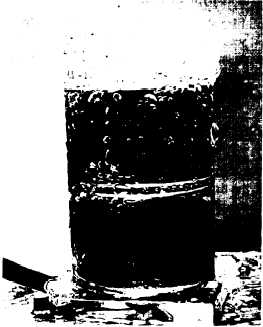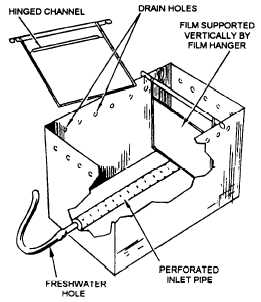Figure 10-5.–Film developing tanks.
Figure 10-6.–Washing film in trays.
scratched. Only line copy types of negatives are usually
washed in a tray.
The most effective washing method in a tray is when
a siphon device is attached to the edge of the tray. The
device siphons water from the bottom of the tray, while
fresh water enters at the top (fig. 10-6). Because fixer is
heavier than water, it sinks to the bottom of the tray.
The best way to wash hand-processed sheet film
(especially more than one sheet at a time) is in a
sheet-film washing tank. Film hangers hold individual
negatives suspended separately in the tank. Fresh water
flows into the bottom of the tank and runs out around
the sides at or near the top of the tank (fig. 10-7). When
you place the film hangers into the tank, ensure the
negatives are separated, so sufficient fresh water reaches
all areas of each negative.
WARNING
Figure 10-7.–Film washing tank
Figure 10-8.–Rapid roll-film washer.
237.126
A rapid roll-film washer is excellent for washing
hand-processed roll film. It is a cylindrical tank, large
enough to hold several spiral reels. The washers come
in a variety of sizes that will wash from two 35mm reels
to as many as six or eight 120 reels (fig. 10-8).
Aboard ship, hoses attached to potable
water spigots can back siphon chemicals or
wash water from the trays or sink into the
drinking water supply. These hoses must have
a backflow preventer installed in the plumbing
The rapid roll-film washer is constructed so the
system.
wash water enters the tank at the base and flows up
10-13







